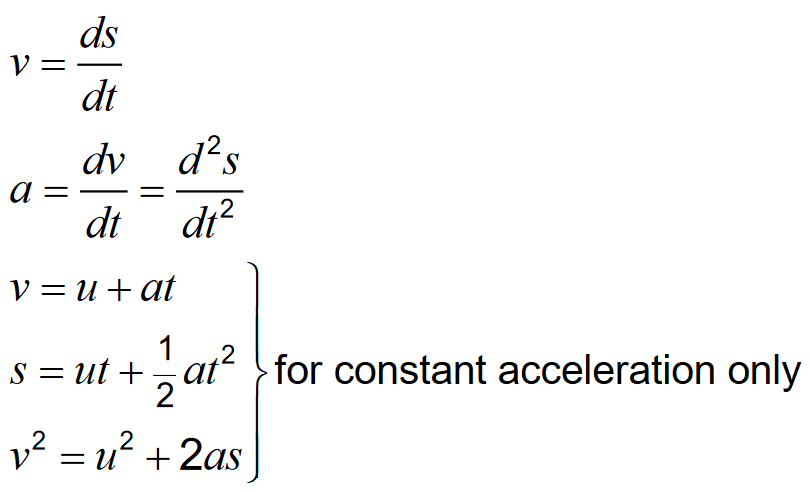Mandatory Course Key Areas - Aug 2018
Kinematic relationships
Knowledge that differential calculus notation is used to represent rate of change.
Knowledge that velocity is the rate of change of displacement with time, acceleration is the rate of change of velocity with time, and acceleration is the second differential of displacement with time.
Derivation of the equations of motion
and
using calculus methods
Use of calculus methods to calculate instantaneous displacement, velocity, and acceleration for straight line motion with a constant or varying acceleration.
Use of appropriate relationships to carry out calculations involving displacement, velocity, acceleration, and time for straight line motion with constant or varying acceleration.

Knowledge that the gradient of a curve (or a straight line) on a motion–time graph represents instantaneous rate of change, and can be found by differentiation.
Knowledge that the gradient of a curve (or a straight line) on a displacement–time graph is the instantaneous velocity, and that the gradient of a curve (or a straight line) on a velocity–time graph is the instantaneous acceleration.
Knowledge that the area under a line on a graph can be found by integration.
Knowledge that the area under an acceleration–time graph between limits is the change in velocity, and that the area under a velocity–time graph between limits is the displacement.
Determination of displacement, velocity or acceleration by the calculation of the gradient of the line on a graph or the calculation of the area under the line between limits on a graph.
